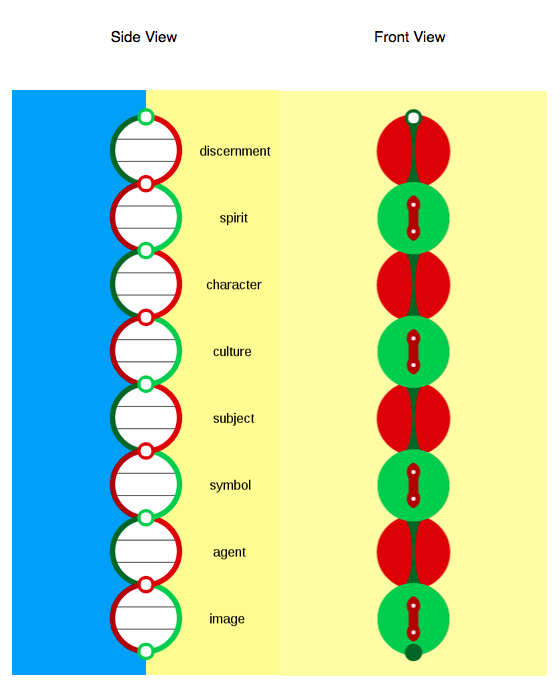The original double-helix model is a side view (profile) with consciousness on the right and sub-consciousness on the left. That way one can see the interaction of the two as affirmation and negation spiral in relation to each other. In this way it is like a craftsman house where the structural elements are exposed to view.
Here is a depiction of the model from the frontal view, with the stucco facade of consciousness covering the activity of the sub-conscious. At the same time, the sub-conscious “breaks through” to spur the development of consciousness. This is depicted by the dark red strand of negation hugging the axis of light green conscious affirmation, and the dark green strand of affirmation hugging the axis of light red conscious negation. Two features show the primacy of affirmation over negation: 1) the light green circles of affirmation over-lap the light red circles of negation because self-consciousness (negation) is secondary to consciousness (affirmation); 2) the dark red strands of negation that break through the light green circles do not traverse the full diameter of the circle, whereas the dark green strands traverse the full diameter of the light red circles. 
The ultimate goal of the development is the small green circle at the top, where affirmation tops the cake like a cherry (well, a green one). This is where the “fly escapes the bottle” — a metaphor used by both Wittgenstein and Freud to depict the end goal of philosophy and psychoanalysis respectively.
This image shows how the frontal view and the side view line up and relate:
